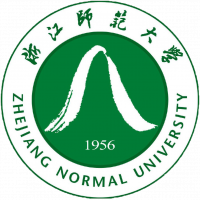简历详情
论文
Estimation of surface water quality parameters based on hyper-spectral and 3D-EEM fluorescence technologies in the Ebinur Lake Watershed, China
期刊: Physics and Chemistry of the Earth, Parts A/B/C 2020作者: Muhadaisi Airiken,Yun Chen,Xiaoping Wang,Fei Zhang
DOI:10.1016/j.pce.2020.102895
Extracting soil salinization information with a fractional-order filtering algorithm and grid-search support vector machine (GS-SVM) model
期刊: International Journal of Remote Sensing 2019作者: Aamir Latif,Verner Carl Johnson,Hsiang-Te Kung,Fei Zhang,...,Xiaoping Wang
DOI:10.1080/01431161.2019.1654142
Estimation of soil salt content (SSC) in the Ebinur Lake Wetland National Nature Reserve (ELWNNR), Northwest China, based on a Bootstrap-BP neural network model and optimal spectral indices
期刊: Science of The Total Environment 2018作者: Verner C. Johnson,Aamir Latif,Hsiang-Te Kung,Jianli Ding,Fei Zhang,Xiaoping Wang
DOI:10.1016/j.scitotenv.2017.10.025
Recognizing the Relationship between Spatial Patterns in Water Quality and Land-Use/Cover Types: A Case Study of the Jinghe Oasis in Xinjiang, China
期刊: Water 2018作者: Xiaoping Wang,Juan Wang,Fei Zhang
DOI:10.3390/w10050646
Estimating Soil Salt Content Using Fractional Derivatives and Optional Spectral Indices in the Ebinur Lake Oasis, Northwestern China
期刊: Data-Enabled Discovery and Applications 2018作者: Verner Carl Johnson,Hsiang-Te Kung,Xiaoping Wang,...,Fei Zhang
DOI:10.1007/S41688-018-0017-2
Effects of land use/cover on surface water pollution based on remote sensing and 3D-EEM fluorescence data in the Jinghe Oasis
期刊: Scientific Reports 2018作者: Fei Zhang,Xiaoping Wang
DOI:10.1038/s41598-018-31265-0
New methods for improving the remote sensing estimation of soil organic matter content (SOMC) in the Ebinur Lake Wetland National Nature Reserve (ELWNNR) in northwest China
期刊: Remote Sensing of Environment 2018作者: Verner Carl Johnson,Hsiang-Te Kung,Fei Zhang,Xiaoping Wang
DOI:10.1016/j.rse.2018.09.020
Multi-scale analysis of the relationship between landscape patterns and a water quality index (WQI) based on a stepwise linear regression (SLR) and geographically weighted regression (GWR) in the Ebinur Lake oasis
期刊: Environmental Science and Pollution Research 2018作者: Fei Zhang,...,Xiaoping Wang
DOI:10.1007/s11356-017-1041-8
Spectral response characteristics and identification of typical plant species in Ebinur lake wetland national nature reserve (ELWNNR) under a water and salinity gradient
期刊: Ecological Indicators 2017作者: Yu Haiyang,Kung Hsiang-Te,Zhang Fei,Wang Xiaoping
DOI:10.1016/j.ecolind.2017.05.071
Recognition of spatial framework for water quality and its relation with land use/cover types from a new perspective: A case study of Jinghe Oasis in Xinjiang, China
期刊: Natural Hazards and Earth System Sciences Discussions 2017作者: Xiaoping Wang,Juan Wang,Fei Zhang
DOI:10.5194/nhess-2017-358







